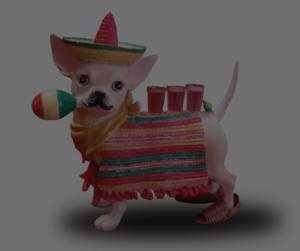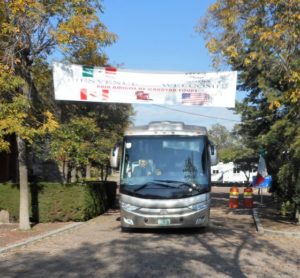
November 23, 2018 – The group has headed off to tour of Teotihuacan Pyramids at 9:00 am precisely with out 2 guides, Carlos and Alfonso. Hard to believe we are half way thru the tour, where has all the time gone? Tomorrow at 8:00 am the Caravan leaves for Morelia in the state of Michoacan.
Day 11, 12, 13 – Club Roca Azul, Jocotepec
The day after we arrived, we had a tour scheduled to visit Guadalajara, the 2nd largest city in Mexico. Some folks were not feeling well and took a pass on the tour. As it turns out this worked out, as the Van that showed up sat exactly 15 people which included Teo (our guide) and the driver, but it was tight. There was a children’s camp going when we arrived which wrapped up on Sunday, lots of organized events and a soccer school. Our Caravan was parked together at the end of the field with services for everyone, lots of trees, shade and green grass. On day 3 at Roca Azul we had a tour to Tlaquepaque and this time with a much bigger bus. Again, Teo was the guide.
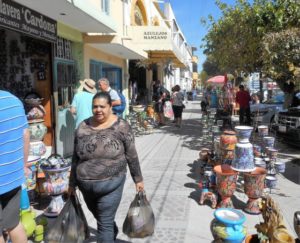
From all reports Teo was fabulous, very attentive and helpful and the group really enjoyed their time in the Guadalajara & Tlaquepaque that included lots of sightseeing, shopping and stops to eat. That last day was a free day and most went into Walmart and Chapala. Lisa and I did some shopping as well, looked after the dogs and refilled everyone’s water containers. We did get a chance to visit Rafa who had been visiting Mexico City. Rafa and his brother now own a Auto Parts Store Chain with a number of stores similar to Pep Boys. The Caravan enjoyed their time at Roca Azul and Lisa and I will be back.

Day 14, 15, 16 – Bugamvilla RV Campground, Guanajuato
We departed at 8:30 am on schedule and headed to Guanajuato and the Bugamville RV Park. Unlike 2016 we were able to bypass the City of Guadalajara using a Hwy that was completed in 2017, definitely a much better and calmer route. As we got closer the traffic increased but Molly (our GPS) got us where we need to be, and we arrived about 4:00 pm with 4 stops in between for lunch, fuel and body breaks. We did loose site of a couple of RVs for 30 or 40 minutes as they had gone ahead for fuel, however they were waiting and rejoined the Caravan prior to our arrival. Carlos was ready for us at the gate when we showed up, and there was already a couple of Motorhomes from Quebec camped out. We celebrated California Mike’s birthday at an impromptu Happy Hour with the gang. *We also figured out those with 4X4 on the side of their trucks routinely paid a higher toll then trucks without that signage (even though they were also 4X4s).

Day 15 Carlos had the Tour Bus arranged for us as reserved which picked up the group at 9:30 am and returned everyone at 4:30 am. Gabriel was the driver and guide and by all reports did an excellent job, the gang tipped him well. Guanajuato is a site to see for sure, particularly the creepy Mummy Museo. Lots of folks had laundry, 40 pesos per kilo, picked up and delivered, expensive but a handy service. Mike and I took all the empty Propane Tanks to a facility down the highway less then 2 km and had them all refilled before the gang returned. On their return we had a Happy Hour as they wanted to share their experiences, it was fun for sure. We are very happy to report that Carlos now has Wi-Fi that works, although not throughout the park. We also had Carlos change out the jumpers in a meter base for the RV electrical outlets which did help the power. He had #14 AWG jumpers, with #8 AWG feeding both sides, once #8 AWG jumpers were installed the voltage improved. Keep in mind the wiring standards in Mexico are different then Canada and the US.

On our 3rd day everyone relaxed and did there own thing until the Taxis we ordered arrived at 3:30 pm to take us into town. Fee was $130 per Taxi each way and we added a $20 pesos tip. On arrival we did some shopping then dinner at Casa Valadez which had been recommended by our Cabo San Lucas friends Peter & Geraldine. We were joined by Mike & Kelly and Mike & Linda, later Gary & Bev arrived at Casa Valadez. Dinner was a little expensive but worth every peso; great food, service and a wonderful ambience. After we jumped into cabs and returned to the RV Park about 7:30 pm. Before we left Carlos informed us, he had been in touch with the Wi-Fi provider and he planned to put an antenna on his sister’s house behind the park so the internet would be available at each RV, good news!
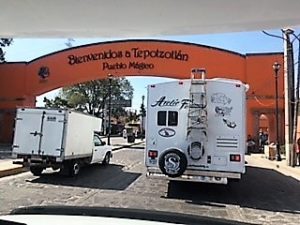
Day 17, 18, 19 – San Ramon Hotel & RV Park, San Miguel de Allende
Today was a short drive to San Miguel de Allende and the San Ramon Hotel & RV Park, much different then the route we took in 2016. This was a wonderful drive, good road (a little narrow), very scenic and little traffic (except the vehicles behind us). Our planned route was interrupted as the road on our last turn was closed. In turn we were on a major Hwy into San Miguel for 20 minutes or so, not really a big deal. We arrived about 11:00 am, managed to get everyone off the highway and then the fun began. Although San Ramon had our reservations for well over a year including the sizes of the RVs they were unprepared for our arrival. It took us over an hour and a half to get everyone parked and we were last. The upper area where we eventually put 5 RVs was confined because of 3 stored RVs. Like putting a Jig Saw puzzle together, we found spaces for everyone, top and bottom. I needed a beer for sure after this. At 2:30 pm some of the gang joined us and we headed into town on the bus, cost us 7 pesos, and were back by 4:30 pm. On return a Happy Hour broke out at the lower area, and much fun was had as we celebrated Gary’s birthday.

The next day we all headed into San Miguel de Allende on the bus to “El Porton” and the entrance to the “Artisan Alley”. We walked the group thru the shopping area which was just opening when we arrived. We had reservations for an 11:00 am Trolley Bus, pre-paid from Canada for 14 people with an English-speaking guide. Everything went as planned except for the guide, my Spanish was much better then her English and that was disappointing for the group. Having said that they enjoyed the tour of San Miguel de Allende. Afterwards everyone made their way back to the San Ramon Hotel & RV Park, most by bus, some by Taxi.
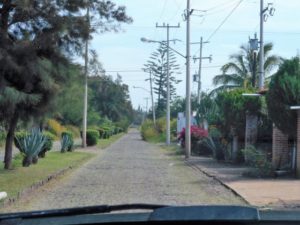
On our last day we drove out to Dolores Hildago for some serious pottery shopping and no one disappointed with the wide variety of goods and selection. We parked at the nearby Super Mercado and shopping extravaganza was on. After a couple of hours folks had lunch and returned to the campground. We had planned to head back into San Miguel for dinner, however everyone chose to stay put and enjoy some downtime.
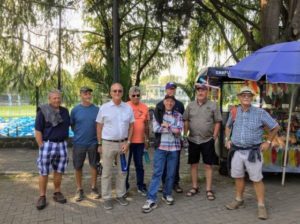
Day 20, 21, 22 – Pepe’s Hotel & RV Park, Tepotzotlan
Our drive to Tepotzotlan was great and took us around Queretaro, about 4 hours in all. Our guides Carlos & Alfonso met us after the toll booth and guided us into Pepe’s on an outer road away from the town centre. When we arrived, we were greeted by staff and a large “Welcome Baja Amigos To Mexico” banner, it was wonderful. Parking the RVs was straight forward as there was many spaces available and lots of room to manoeuvre. Later Pepe arrived and hosted a reception for the group personally with staff although he is gravely ill. This was very meaningful for the group and we were privileged to meet him in person. He answered all the questions folks had and was really quite charming.

The next day the group was off to Mexico City by Bus hired thru Pepe’s and it did not disappoint. It was new and could seat at least 24 with a washroom on board. It took less then 2 hours and they were checking in at the Hotel Majestic (Best Western) on the Zokalo. After lunch they jumped on a Turi-Bus for a scenic tour of town, then dinner and finished the day at the world famous Mexican Folkloric Performance at the main downtown theatre. The next day after a buffet breakfast they were off for a walking tour around the Zokalo which included the Templo Mayor which was the Aztec main temple of the Mexica Peoples in their capital city of Tenochtitlan. They returned to Pepe’s after a busy 2 days and an impromptu Happy Hour broke which included pumpkin pie in recognition of the American Thanksgiving Holiday.

*Lastly I want to wish my Brother (older) Rod a Happy Birthday, he turns the big 64 today! Congrats Bro only 1 more year and you can collect OAS!
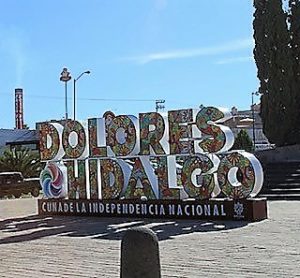
Did you know?
Guadalajara is the capital and largest city of the Mexican state of Jalisco, and the seat of the municipality of Guadalajara. The city is located in the central region of Jalisco in the Western-Pacific area of Mexico. With a population of 1,495,189 it is Mexico’s fourth most populous municipality. The Guadalajara Metropolitan Area includes seven adjacent municipalities with a reported population of 4,328,584 in 2009, making it the second most populous metropolitan area in Mexico, behind Mexico City. The municipality is the second most densely populated one in Mexico; the first being Ciudad Nezahualcóyotl in State of Mexico.

Guadalajara is the 10th largest city in Latin America in terms of population, urban area and gross domestic product. The city is named after the Spanish city of Guadalajara, the name of which came from the Andalusian Arabic wād(i) l-ḥijāra, meaning “river/valley of stones”. The city’s economy is based on industry, especially information technology, with a large number of international firms having manufacturing facilities in the Guadalajara Metropolitan Area. Other, more traditional industries, such as shoes, textiles and food processing are also important contributing factors.

Guadalajara is a cultural center of Mexico, considered by most to be the home of mariachi music and host to a number of large-scale cultural events such as the International Film Festival of Guadalajara and the Guadalajara International Book Fair and a number of globally renowned cultural events which draw international crowds. It is also home to the C.D. Guadalajara, one of the most popular football clubs in Mexico. This city was named the American Capital of Culture for 2005. Guadalajara also hosted the 2011 Pan American Games.
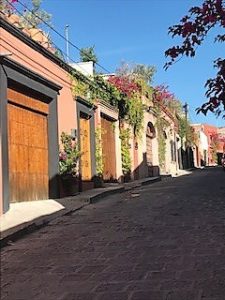
History
The city was established in five other places before moving to its current location. The first settlement in 1532 was in Mesa del Cerro, now known as Nochistlán, Zacatecas. This site was settled by Cristóbal de Oñate as commissioned by Nuño de Guzmán, with the purpose of securing recent conquests and defending them against the still-hostile natives. The settlement did not last long at this spot due to the lack of water, so in 1533 it was moved to a location near Tonalá. Four years later, Guzmán ordered that the village be moved to Tlacotán. While the settlement was in Tlacotán, the Spanish king Charles VI granted the coat of arms that the city still has today.
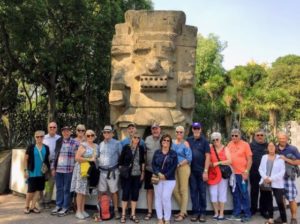
This settlement was ferociously attacked during the Mixtón War in 1543 by Caxcan, Portecuex and Zacateco peoples under the command of Tenamaxtli. The war was initiated by the natives due to the cruel treatment of Indians by Nuño de Guzmán, in particular the enslavement of captured natives. Viceroy Antonio de Mendoza had to take control of the campaign to suppress the revolt after the Spanish were defeated in several engagements. The conflict ended after Mendoza made some concessions to the Indians such as freeing the Indian slaves and granting amnesty. The village of Guadalajara barely survived the war, and the villagers attributed their survival to the Archangel Michael, who remains the patron of the city. It was then decided to move the city once again, this time to Atemajac, as it was more defensible. The city has remained there to this day. In 1542, records indicate that 126 people were living in Guadalajara, and in the same year, the status of city was granted by the Spanish king. Guadalajara was officially founded on February 19, 1550 in the Valley of Atemajac. The settlement’s name came from the Spanish hometown of Nuño de Guzmán.
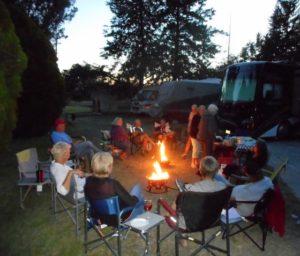
In 1559, royal offices for the province of Nueva Galicia were moved from Compostela to Guadalajara, as well as the bishopric. Construction of the cathedral was begun in 1563. In 1575, religious orders such as the Augustinians and Dominicans arrived, which would make the city a center for evangelization efforts. The historic city center encompasses what was four centers of population, as the villages of Mezquitán, Analco and Mexicaltzingo were annexed to the Atemajac site in 1669.
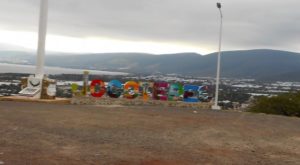
In 1791, the University of Guadalajara was established in the city, which was then the capital of Nueva Galicia. The inauguration was held in 1792 at the site of the old Santo Tomas College. While the institution was founded during the 18th century, it would not be fully developed until the 20th, starting in 1925. In 1794, the Hospital Real de San Miguel de Belén, or simply the Hospital de Belén, was opened.
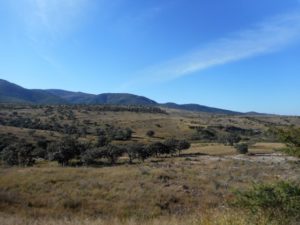
In the 18th century Guadalajara’s economy was based on agriculture and production of goods such as textiles, shoes and food products. Guadalajara remained the capital of Nueva Galicia until the Mexican War of Independence. After Miguel Hidalgo y Costilla decided not to attack Mexico City, he decided to retreat to Guadalajara in late 1810. Initially his army were welcome, as he promised to lower taxes and put an end to slavery. However, violence by the rebel army to city residents, especially royalists, soured relations. Hidalgo did sign a proclamation ending slavery, which was honored in the country since after the war. During this time, he also founded the newspaper El Despertador Americano, dedicated to the insurgent cause.
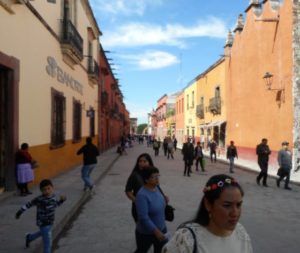
During this time, royalist forces marched to Guadalajara, arriving in January 1811 with nearly 6,000 men. Insurgents Ignacio Allende and Mariano Abasolo wanted to concentrate their forces in the city and plan an escape route should they be defeated, but Hidalgo rejected this. Their second choice then was to make a stand at the Puente de Calderon just outside the city. Hidalgo had between 80,000 and 100,000 men and 95 cannons, but the better trained royalists won, decimating the insurgent army, forcing Hidalgo to flee towards Aguascalientes. Guadalajara would remain in royalist hands until nearly the end of the war.
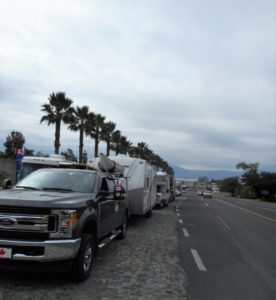
After the state of Jalisco was erected in 1823, the city became its capital. In 1844, General Mariano Paredes y Arrillaga initiated a revolt against the government of President Antonio López de Santa Anna, which the president managed to quell personally. However, while Santa Anna was in Guadalajara, a revolt called the Revolution of the Three Hours brought José Joaquín Herrera to the presidency and put Santa Anna into exile. During the Reform War, President Benito Juárez had his government here for a time in 1856. French troops entered the city during the French Intervention in 1864, and the city was retaken by Mexican troops in 1866.
Despite the violence, the 19th century was a period of economic, technological and social growth for the city. After Independence, small-scale industries developed, many of them owned by immigrants from Europe. Rail lines connecting the city to the Pacific coast and north to the United States intensified trade and allowed products from rural areas of Jalisco state to be shipped. The ranch culture became a very important aspect of Jalisco’s and Guadalajara’s identity since this time. From 1884 to 1890, electrical service, railroad service and the Observatory were established.
Guadalajara again experienced substantial growth after the 1930s, and the first industrial park was established in 1947. The city’s population surpassed one million in 1964, and by the 1970s it was Mexico’s second largest city, and the largest in western Mexico. Most of the modern city’s urbanization took place between the 1940s and the 1980s, with the population doubling every ten years until it stood at 2.5 million in 1980 where it has remained.
The increase of population brought with it the increase in the size of what is now called Greater Guadalajara, rather than an increase in the population density of the city. Migrants coming into Guadalajara from the 1940s to the 1980s were mostly from rural areas, who lived in the city center until they had enough money to buy property. This property was generally bought in the edges of the city, which were urbanizing into fraccionamientos, or residential areas. In the 1980s, the city was described as a “divided city” east to west based on socioeconomic class. Since then, the city has evolved into four sectors, which are still more-or-less class centered. The upper classes tend to live in Hidalgo and Juárez in the northwest and southwest, while lower classes tend to live in the city center, Libertad in the north east and southeast in Reforma. However, lower class development has developed on the city’s periphery and upper and middle classes are migrating toward Zapopan, making the situation less neatly divided.
Since 1996, activity by multinational corporations has had a significant effect on the economic and social development of the city. The presence of companies such as Kodak, Hewlett-Packard, Motorola and IBM has been based on production facilities built just outside the city proper, bringing in foreign labor and capital. This was made possible in the 1980s by surplus labor, infrastructure improvements and government incentives. These companies focus on electrical and electronic items, which is now one of Guadalajara’s two main products (the other being beer). This has internationalized the economy, steering it away from manufacturing and toward services, dependent on technology and foreign investment. This has not been favorable for the unskilled working class and traditional labor sectors.

1992 sewer explosions
On April 22, 1992, numerous gasoline explosions in the sewer system over four hours destroyed 8 km (5 mi) of streets in the downtown district of Analco. Gante Street was the most damaged. Officially, 206 people were killed, nearly 500 injured and 15,000 were left homeless. The estimated monetary damage ranges between $300 million and $1 billion. The affected areas can be recognized by the more modern architecture in the areas that were destroyed.
Three days before the explosion, residents started complaining of a strong gasoline-like smell coming from the sewers. City workers were dispatched to check the sewers and found dangerously high levels of gasoline fumes. However, no evacuations were ordered. An investigation into the disaster found that there were two precipitating causes. The first was new water pipes that were built too close to an existing gasoline pipeline. Chemical reactions between the pipes caused erosion. The second was a flaw in the sewer design that did not allow accumulated gases to escape.
Numerous arrests were made in an attempt to indict those responsible for the blasts. Four PEMEX (the state oil company) officials were indicted and charged, on the basis of negligence. Ultimately, however, these people were cleared of all charges. Calls for the restructuring of PEMEX were made but they were successfully resisted.
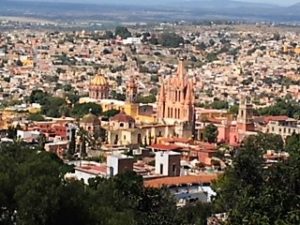
Ocampo assassination
On May 24, 1993, Archbishop Juan Jesús Posadas Ocampo, along with six other people, was assassinated on the parking lot of Guadalajara International Airport. He was inside his car and received 14 gunshot wounds. A government inquiry concluded he was caught in a shootout between rival cocaine cartels and was mistakenly identified as a drug lord, but no one was ever imprisoned for the slaying. Juan Francisco Murillo Díaz “El Güero Jaibo” and Édgar Nicolás Villegas “El Negro”, members of the Tijuana Cartel, were identified as the masterminds of the homicide.
The city has hosted several important international events, such as the first Cumbre Iberoamericana in 1991, the Third Summit of Heads of State and Governments from Latin America, the Caribbean and the European Union in 2004, the Encuentro Internacional de Promotores y Gestores Culturales in 2005, and the 2011 Pan American Games. It was also named the American Capital of Culture in 2005, Ciudad Educadora (Educator City) in 2006 and the first Smart City in Mexico due to its use of technology in development.
In its 2007 survey entitled “Cities of the Future”, FDi magazine ranked Guadalajara highest among major Mexican cities, and designated Guadalajara as having the second strongest economic potential of any major North American city, behind Chicago. The magazine also ranked the city as the most business-friendly Latin American city in 2007.
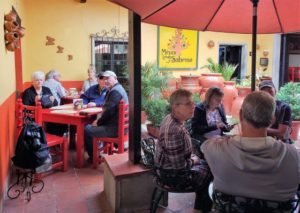
Historic downtown
The historic downtown of Guadalajara is the oldest section of the city, where it was founded and the oldest buildings are located. It centers on Paseo Morelos/Paseo Hospicio from the Plaza de Armas, where the seats of ecclesiastical and secular power are, and east toward the Plaza de Mariachis and the Hospicio Cabañas. The Plaza de Armas is a rectangular plaza with gardens, ironwork benches and an ironwork kiosk which was made in Paris in the 19th century.
Within Guadalajara’s historic downtown, there are a large number of squares and public parks: Parque Morelos, Plaza de los Mariachis, Plaza Fundadores, Plaza Tapatia, Plaza del Agave, Parque Revolucion, Jardin del Santuario, Plaza de Armas, Plaza de la Liberacion, Plaza Guadalajara and the Rotonda de los Hombres Ilustres, the last four of which surround the cathedral to form a Latin Cross. Construction began on the Metropolitan Cathedral in 1558 and the church was consecrated in 1616. Its two towers were built in the 19th century after an earthquake destroyed the originals. They are considered one of the city’s symbols. The architecture is a mix of Gothic, Baroque, Moorish and Neoclassical. The interior has three naves and eleven side altars, covered by a roof supported by thirty Doric columns.
The Rotonda de los Hombres Ilustres (Rotunda of Illustrious Men) is a monument made of quarried stone, built in 1952 to honor the memory of distinguished people from Jalisco. A circular structure of seventeen columns surrounds ninety-eight urns containing the remains of those honored. Across the street is the municipal palace which was built in 1952. It has four façades of quarried stone, and it is mostly of neoclassical design with elements such as courtyards, entrances and columns that imitate the older structures of the city. The Palace of the State Government is in Churrigueresque and Neoclassical styles and was begun in the 17th century and finished in 1774. The interior was completely remodeled after an explosion in 1859. This building contains a number of murals by José Clemente Orozco, a native of Jalisco, including “Lucha Social,” “Circo Político”, “Las Fuerzas Ocultas” and “Hidalgo” which depicts depicts Miguel Hidalgo y Costilla with his arm raised above his head in anger at the government and the church.
The Cathedral is bordered to the east by the Plaza de la Liberación, nicknamed the Plaza de las Dos Copas, referring to the two fountains on the east and west sides. Facing this plaza is the Teatro Degollado (Degollado Theater). Built in the mid-nineteenth century in neoclassical design the main portal has a pediment with a scene in relief called “Apollo and the Muses” sculpted in marble by Benito Castañeda. The interior vaulted ceiling is painted with a fresco by Jacobo Gálvez and Gerardo Suárez which depicts a scene from the Divine Comedy. Behind the theater is another plaza with a fountain called the Fuente de los Fundadores (Fountain of the Founders). The plaza is located in the exact spot where the city was founded and contains a sculpture depicting Cristobal de Oñate at the event (finsemana).
The Jalisco Regional Museum (Ex seminary de San José) was built at the beginning of the 18th century to be the Seminario Conciliar de San José. From 1861 to 1914, it housed a school called Liceo de Varones. In 1918, it became the Museum of Fine Arts. In 1976, it was completely remodeled for its present use. The Museum displays its permanent collection in sixteen halls, fourteen of which are dedicated to Paleontology, Pre-History, and Archeology. One of the prized exhibits is a complete skeleton of a mammoth. The other two halls are dedicated to painting and history. The painting collection includes works by Juan Correa, Cristóbal de Villalpando and José de Ibarra.
Between the Cathedral and the Hospicio is a large plaza called Plaza Tapatía, its centerpiece is the large Quetzalcoátl sculpture/fountain. Southeast of this plaza is the Mercado Libertad, aka the Mercado de San Juan de Dios, one of the largest traditional markets in Mexico. The Temple of San Juan de Dios, a Baroque church built in the 17th century, is located next to the market.
At the east end is the Plaza de los Mariachis and the Ex-Hospicio Cabañas. The Plaza de los Mariachis is faced by a number of restaurants featuring live mariachis play in the evening. The Ex-Hospicio Cabañas extends along the entire east side of the Plaza. Constructed by Manuel Tolsá beginning in 1805 under orders of Carlos III it was inaugurated and began its function as an orphanage in 1810, in spite of the fact that it would not be finished until 1845. It was named after Bishop Ruiz de Cabañas y Crespo. The façade of the building is Neoclassical and its main entrance is topped by a triangular pediment. Today, it is the home of the Instituto Cultural Cabañas (Cabañas Cultural Institute) and its main attraction is the murals by José Clemente Orozco, which covers the main entrance hall. Among these murals is “Hombre del Fuego” (Man of Fire) considered to be one of Orozco’s finest works.
Off this east-west axis are a number of other significant constructions. The Legislative Place is Neoclassical which was originally built in the 18th century. It was reconstructed in 1982. The Palace of Justice was finished in 1897. The Old University Building was a Jesuit College named Santo Tomás de Aquino. It was founded in 1591. Later, it became the second Mexican University in 1792. Its main portal is of yellow stone. The Casa de los Perros (House of the Dogs) was constructed in 1896 in neoclassical design. On Avenida Juarez is the Sanctuary of Nuestra Señora del Carmen which was founded between 1687 and 1690 and remodeled completely in 1830. It retains its original coat of arms of the Carmelite Order as well as sculptures of the prophets Elijah and Elisha. Adjoining it is what is left of the Carmelite monastery, which was one of the richest in New Spain.
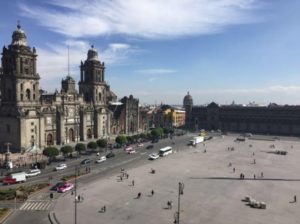
Economy
Guadalajara has the 3rd largest economy and industrial infrastructure in Mexico, contributing 37% of the state of Jalisco’s total gross production. Its economic base is strong, diversified and mainly based on commerce and services, although the manufacturing sector plays a defining role. Ranked in the top ten in Latin America in terms of gross domestic product, 3rd highest ranking in Mexico, in its 2007 survey entitled “Cities of the Future”, FDi magazine ranked Guadalajara highest among major Mexican cities. Guadalajara was designated as having the 2nd strongest economic potential of any major North American city behind Chicago. FDI Magazine also ranked the city as the most business-friendly Latin American city in 2007.
In 2009 Moody’s Investors Service assigned ratings of Ba1 (Global scale, local currency) and A1.mx (Mexican national scale). During the prior five years, the municipality’s financial performance had been mixed, but has begun to stabilize in the last two years. Guadalajara manages one of the largest budgets among Mexican municipalities and its revenue per capita indicator (Ps. $2,265) places it above the average for Moody’s-rated municipalities in Mexico.
The city’s economy has two main sectors. Commerce and tourism employ most: about 60% of the population. The other is industry, which has been the engine of economic growth and the basis of Guadalajara’s economic importance nationally even though it employs only about a third of the population. Industries here produce products such as food and beverages, toys, textiles, auto parts, electronic equipment, pharmaceuticals, footwear, furniture and steel products. Two of the major industries here have been textiles and shoes, which are still dynamic and growing. Sixty percent of manufactured products are sold domestically, while forty percent are exported, mostly to the United States. This makes Guadalajara’s economic fortunes dependent upon those of the U.S., both as a source of investment and as a market for its goods.
However, it is the electronics and information technology sectors here that have given the city the nickname of the “Silicon Valley of Mexico.” Guadalajara is the main producer of software, electronic and digital components in Mexico. Telecom and computer equipment from Guadalajara accounts for about a quarter of Mexico’s electronics exports. Companies such as General Electric, IBM, Intel Corporation, Freescale Semiconductor, Hitachi Ltd., Hewlett-Packard, Siemens, Flextronics, Oracle, TCS, Cognizant Technology Solutions and Jabil Circuit have facilities in the city or its suburbs. This phenomenon began after the passage of the North American Free Trade Agreement (NAFTA). International firms started building facilities in Mexico, especially Guadalajara, displacing Mexican firms, especially in information technology. One of the problems this has created is that when there are economic downturns, these international firms scale back.
In 2007, a report in fDi magazine stated that Guadalajara has the second strongest economic potential of any major North American city, behind only Chicago for sheer economic potential. The same research noted Guadalajara as the “city of the future” due to its youthful population, low unemployment and large number of recent foreign investment deals; it was also found the third most business-friendly city in North America.
The city also has to compete with China, especially for electronics industries which rely on high volume and low wages. This has caused the city to move toward high-mix, mid-volume and value-added services, such as automotive. However, its traditional advantage of proximity to the U.S. market is one reason Guadalajara stays competitive. Mexico ranked third in 2009 in Latin America for the export of information technology services, behind Brazil and Argentina. This kind of service is mostly related to online and telephone technical support. The major challenge this sector has is the lack of university graduates who can speak English.
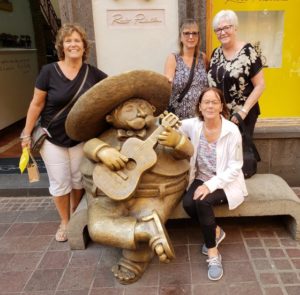
Local economy
Most of the economy revolves around commerce, employing 60% of the population. This activity has mainly focused on the purchase and sale of the following products: food and beverages, textiles, electronic appliances, tobacco, cosmetics, sport articles, construction materials and others. Guadalajara’s commercial activity is second only to Mexico City.
Globalization and neoliberal reforms have affected the form and distribution of commerce in Guadalajara since the early 1990s. This has led to tensions between traditional markets, such as the Mercardo Libertad, and retailers such as department stores and supermarkets. Local governments in the metropolitan area used to invest in and heavily regulate traditional markets but this is no longer the case. To attract private corporate investment, regulatory control eased and most commercial developments now are controlled by private concerns. The city is the national leader in the development and investment of shopping malls. Many shopping centers have been built, such as Plaza Galerias, one of the largest shopping centers in Latin America, and Andares. Galerías Guadalajara covers 160,000 m2 (1,722,225.67 sq ft) and has 220 stores. It contains the two largest movie theaters in Latin America, both with IMAX screens. It hosts art exhibits and fashion shows, and has an area for cultural workshops. Anchor stores includes Liverpool and Sears and specialty stores such as Hugo Boss, Max Mara and Lacoste. Also Best Buy opened its first Guadalajara store here. It’s on the third floor and has its own additional private entrance on the top floor of the adjacent parking lot. Another Best Buy store was inaugurated in Ciudadela Lifestyle Center mall, which was the chain’s third largest in the world, according to the company.
Andares is another important commercial center located in Zapopan. This $530 million mixed-use complex opened in 2008, designed by renowned Mexican Sordo Madaleno architecture firm features luxury residences and a high-level mall anchored by two large department stores, Liverpool and El Palacio de Hierro. The 133,000 m2 (1,400,000+ sq ft) mall offers hundreds of stores, a big food court located on the second floor and several restaurants at the Paseo Andares.
A large segment of the commercial sector caters to tourists and other visitors. Recreational tourism is mainly concentrated in the historic downtown. In addition to being a cultural and recreational attraction and thanks to its privileged geographical location, the city also serves as an axis to nearby popular beach destinations such as Puerto Vallarta, Manzanillo and Mazatlán. Other types of visitors include those who travel to attend seminars, conventions and other events in fields such as academic, entertainment, sports and business. The best-known venue for this purposes is the Expo Guadalajara, a large convention center surrounded by several hotels. It was built in 1987 and it is considered the most important convention center in Mexico.
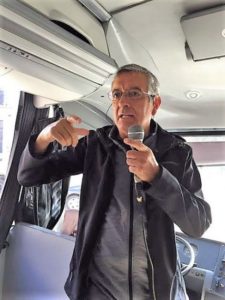
Foreign investment and trade
Most of Guadalajara’s economic growth since 1990 has been tied with foreign investment. International firms have invested here to take advantage of the relatively cheap but educated and highly productive labor, establishing manufacturing plants which re-export their products to the United States, as well as provide goods for the internal Mexican market. A media report in early October 2013 stated that five major Indian IT (information technology) companies have established offices in Guadalajara, while several other Indian IT companies continue to explore the option of expanding to Mexico. Due to the competitiveness in the Indian IT sector, companies are expanding internationally, and Mexico offers an affordable opportunity for Indian companies to better position themselves to enter the United States market. The trend emerged after 2006 and the Mexican government also offers incentives to foreign companies.
Exports from the city went from 3.92 billion USD in 1995 to 14.3 billion in 2003. From 1990 to 2000, socio-economic indicators show that quality of life improved overall; however, there is still a large gap between the rich and the poor, and the rich have benefited from the globalization and privatization of the economy more than the poor. International investment has not only affected the labor market in the Guadalajara metro area but also that of the rural towns and villages that surround it. Guadalajara is the distribution center for the region and its demands have led to a shifting of employment, from traditional agriculture and crafts to manufacturing and commerce in urban centers. This has led to mass migration from the rural areas to the metropolitan area.

Politics
Like other municipalities in Mexico, Guadalajara is governed by a municipal president, who exercises executive power for three consecutive years, this office is currently occupied by Jorge Aristóteles Sandoval Díaz candidate for the PRI. The legislature has the cabildo, formed by the form chosen by the candidate for mayor, made up of aldermen, who are not elected by the people by direct or indirect voting, but the return happens automatically if the mayor wins. The municipality is divided into five electoral districts for the purpose of election of representatives of the city in the federal legislature. These districts are the VIII, IX, XI, XIII and XIV of the state of Jalisco.
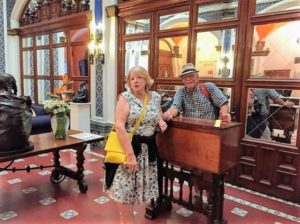
Municipality and the metropolitan area
The city of Guadalajara and the municipality of Guadalajara are essentially co extensive with over 99% of the municipality living within the city limits, and nearly all of the municipality urbanized. Urbanization centered on the city spreads out over seven other municipalities; of Zapopan, Tlaquepaque, Tonalá, Tlajomulco de Zuñiga, El Salto, Ixtlahuacán de los Membrillos and Juanacatlán. These areas form the “Guadalajara Metropolitan Area” (Zona Metropolitana de Guadalajara in Spanish), which is the most populous in the state of Jalisco and the second most populous in the country after the Mexico City Metropolitan area. This metropolitan area had a population of 4,298,715 in 2008.

Education
Guadalajara is an important nucleus of universities and educational centers with national prestige. The most important is the Universidad de Guadalajara, which was established on October 12, 1791 by royal decree. The entity underwent a number of reorganizations since then, but the modern university as it exists today was established in 1925, when the governor of Jalisco convened professors, students and others to re-establish the university. These precepts were organized into a law called the “Ley Organica.” Ranked fifth among the best Mexican Universities in year 2012
Guadalajara is also home to ITESO, a Jesuit university, and has campuses of several private schools such as a campus of the Universidad del Valle de México, Tec de Monterrey, Universidad Marista de Guadalajara,Universidad Guadalajara LAMAR, Universidad Panamericana Sede Guadalajara, as well as the Universidad Autónoma de Guadalajara (UAG), which was founded in 1935 and is the oldest private university in Mexico, and Universidad del Valle de Atemajac (UNIVA). In addition, the city hosts The American School Foundation of Guadalajara (ASFG) which has 1420 students in pre-school through twelfth grade; it is the only US-accredited school in Guadalajara.
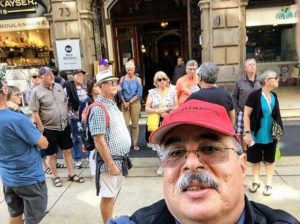
Climate
Under the Köppen climate classification, Guadalajara has a humid subtropical climate (Cwa) that is quite close to a tropical climate, featuring dry, warm winters and hot, wet summers. Guadalajara’s climate is influenced by its high altitude and the general seasonality of precipitation patterns in western North America. Although the temperature is warm year-round, Guadalajara has very strong seasonal variation in precipitation. The northward movement of the Inter-Tropical Convergence Zone brings a great deal of rain in the summer months, whereas for the rest of the year, the climate is rather arid. The extra moisture in the wet months moderates the temperatures, resulting in cooler days and nights during this period. The highest temperatures are usually reached in May averaging 33 °C (91 °F), but can reach up to 39 °C (102 °F) just before the onset of the wet season. March tends to be the driest month and July the wettest, with an average of 273 millimetres (10.7 in) of rain, over a quarter of the annual average of about 1,002 millimetres (39.4 in).
During the rainy season, afternoon storms are very common and can sometimes bring hail storms to the city, especially towards late August or September. Winters are relatively warm despite the city’s altitude, with January daytime temperatures reaching about 25 °C (77 °F) and nighttime temperatures about 10 °C (50 °F). However, the outskirts of the city (generally those close to the Primavera Forest) experience in average cooler temperatures than the city itself. There, temperatures around 0 °C (32 °F) can be recorded during the coldest nights. Frost may also occur during the coldest nights, but temperatures rarely fall below 0 °C (32 °F) in the city, making it an uncommon phenomenon. Cold fronts in winter can sometimes bring light rain to the city for several days in a row. Snowfall is extremely rare, with the last recorded one occurring on December 1997, which was the first time in 116 years, since it last fell in 1881.
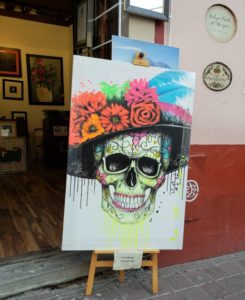
Transportation
Line 1 of the Guadalajara light rail/metro system, in median of Avenida Colón. The two-line system is partly on the surface and partly underground.

Guadalajara is well connected by modern highways to Mexico City, to the Northwest and to the major beach resorts of Manzanillo, Mazatlán and Puerto Vallarta. The main highways are Highway 15, which connects the city northwest to Nogales, Sonora, via Tepic, Nayarit and east to Mexico City via Morelia. Highway 80D leads northwest towards Aguascalientes, and Highway 54D leads south to the coast via Colima. The city is served by the Don Miguel Hidalgo y Costilla International Airport, also known as Guadalajara International Airport (ICAO code: MMGL) opened in 1966. It is located 16 km (10 mi) south of downtown Guadalajara, and it was built on the Tlajomulco de Zuñiga city, way down to Chapala. This airport is the third most active of the country (after Mexico City and Cancún) with direct flights to many Mexican and American cities. It also has a lively and distinctive network of car-free streets.
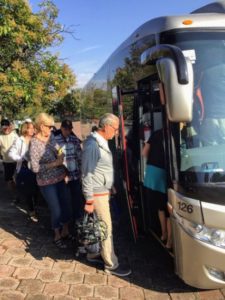
Within the city itself, there are various forms of public transportation. The Guadalajara light rail/metro system, named SITEUR (Sistema de Tren Eléctrico Urbano), Spanish for Urban Electrical Train System, provides rapid transit service within Guadalajara and the neighboring municipalities of Zapopan and Tlaquepaque. It consists of two lines: line 1, running from north to south, with 19 stations, and line 2, running from downtown to the east, with 10 stations. The trains are electric and have a top speed of 70 km/h (43 mph). Currently there are 48 articulated cars in service, built in Mexico by Concarril/Bombardier. There is a plan for Line 3 going from north-central Ávila Camacho station to Tesistán as well as plans to extend Line 2 from Tetlán to Tonalá. The Guadalajara Macrobus is a public transportation system based on the concept of Bus Rapid Transit, where buses run in lanes specifically for them and have stations for boarding. Phase I of the Macrobús project opened in 2009 as a line 16-km line following Calzada Independencia and serving 27 stations. The city also has the Guadalajara trolleybus system, which has been operating since the 1970s, and there are several private companies operating regular city buses.
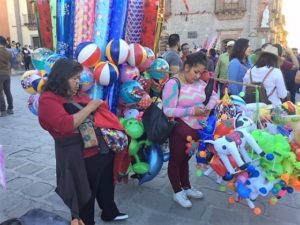
Culture
Guadalajara is the cultural center of western Mexico and the second most important cultural center in the country. It is nicknamed the “Pearl of the West.” While it is a modern city, it has kept many of the rural traditions of Jalisco, such as mariachi and a strong sense of Catholicism. Cultural tourism is one of the most important economic activities, especially in the historic center. Guadalajara is a center of learning with six universities, two culinary institutes and a thriving art scene. Guadalajara has twenty two museums, which include the Regional Museum of Jalisco, the Wax Museum, the Trompo Mágico children’s museum and the Museum of Anthropology. The Hospicio Cabañas in the historic center is a World Heritage Site. For these attributes and others, the city was named an American Capital of Culture in 2005.
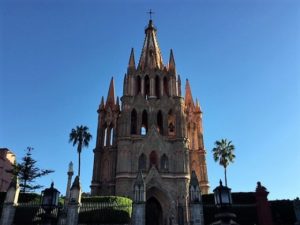
This city has been the cradle and dwelling of distinguished poets, writers, painters, actors, film directors and representatives of the arts, etc., such as: José Clemente Orozco, Dr. Atl, Roberto Montenegro, Alejandro Zohn, Luis Barragán, Carlos Orozco Romero, Federico Fabregat, Raul Anguiano, Juan Soriano, Javier Campos Cabello, Martha Pacheco, Alejandro Colunga, José Fors, Juan Kraeppellin, Davis Birks, Carlos Vargas Pons, Jis, Trino, Erandini, Enrique Oroz, Rubén Méndez, Mauricio Toussaint, Scott Neri, Paula Santiago, Edgar Cobian, L.Felipe Manzano, and (the artist formerly known as Mevna); The freeplay guitarist and music composer for the movies El Mariachi and The Legend of Zorro, Paco Renteria; important exponents of Literature such as: Juan Rulfo, Francisco Rojas, Agustín Yáñez, Elías Nandino, Idella Purnell, Jorge Souza, among others; classic repertoire composers like Gonzalo Curiel, José Pablo Moncayo, Antonio Navarro, Ricardo Zohn, Carlos Sánchez-Gutiérrez and Gabriel Pareyon; film directors like Felipe Cazals, Jaime Humberto Hermosillo, Erik Stahl, Guillermo del Toro and actors like Katy Jurado, Enrique Alvarez Felix, and Gael García Bernal.
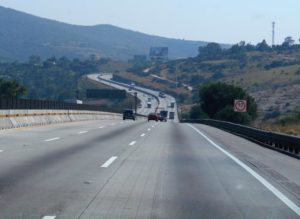
The cuisine is a mix of pre-Hispanic and Spanish influences, like the rest of Mexico, but dishes here have their own flavors and are made with their own techniques. One of the main distinguishing dishes is birria. This is goat or lamb meat cooked in a spicy sauce seasoned with chili peppers, ginger, cumin, black pepper, oregano and cloves. The traditional way of preparing birria is to pit roast the meat and spices wrapped in maguey leaves. It is served in bowls along with minced onion, limes and tortillas.

Another dish that is strongly associated with Guadalajara is tortas ahogadas, literally “drowned tortas (sub sandwiches).” This sandwich is an oblong “bolillo” bun (made denser in Guadalajara than in the rest of the country) filled with pork and other ingredients. Then the sandwich is covered in a red tomato/chili pepper sauce. Other dishes that are popular here include pozole, a soup prepared with hominy, chicken or pork and various condiments and pipián, which is a sauce prepared with peanuts, squash and sesame seed. Bionico is a popular local dessert. The city hosts the Feria Internacional Gastronomía (International Gastronomy Fair) each year in September showcasing both Mexican and international cuisines. A large number of restaurants, bars, bakeries and cafés participate as well as producers of beer, wine and tequila.
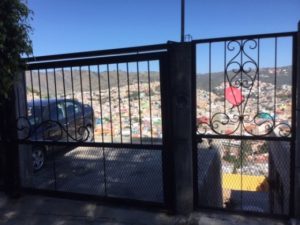
Mariachi music is strongly associated with Guadalajara both in Mexico and abroad even though the musical style originated in the nearby town of Cocula, Jalisco. The connection between the city and mariachi began in 1907 when an eight-piece mariachi band and four dancers from the city performed on stage at the president’s residence for both Porfirio Díaz and the secretary of State of the United States. This made the music a symbol of west Mexico, and after the migration of many people from the Guadalajara area to Mexico City (mostly settling near Plaza Garibaldi), it then became a symbol of Mexican identity as well Guadalajara hosts the Festival of Mariachi and Charreria, which began in 1994. It attracts personages in the fields of art, culture and politics from both Mexico and abroad. Regularly the best mariachis in Mexico participate, such as Mariachi Vargas, Mariachi de América and Mariachi los Camperos de Nati Cano. Mariachi bands from all over the world participate, coming from countries such as Venezuela, Cuba, Belgium, Chile, France, Australia, Slovak Republic, Canada and the United States.
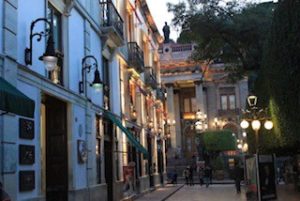
The events of this festival take place in a number of venues all over the metropolitan area and includes a parade with floats. In August 2009, 542 mariachi musicians played together for a little over ten minutes to break the world’s record for largest mariachi group. The musicians played various songs ending with two classic Mexican songs “Cielito Lindo” and “Guadalajara.” The feat was performed during the XVI Encuentro Internacional del Mariachi y la Charreria. The prior record was 520 musicians in 2007 in San Antonio, Texas. In the historic center of the city is the Plaza de los Mariachis, named such as many groups play here. The plaza is being renovated for the 2011 Pan American Games in anticipation of the crowds that will visit the city. Over 750 mariachi musicians play traditional melodies on the plaza, and along with the restaurants and other businesses, the plaza supports more than 830 families. A recent innovation has been the fusion of mariachi melodies and instruments with rock and roll performed by rock musicians in the Guadalajara area. An album collecting a number of these melodies was produced called “Mariachi Rock-O.” There are plans to take these bands on tour in Mexico, the United States and Europe.
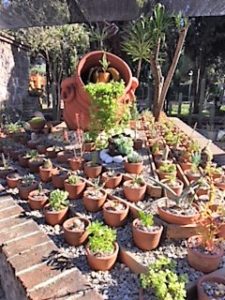
In addition to mariachi, the city is home to a renowned symphony orchestra. The Orquesta Filarmónica de Jalisco (Jalisco Philarmonic Orchestra) was founded by José Rolón in 1915. It held concerts from that time until 1924, when state funding was lost. However, the musicians kept playing to keep the orchestra alive. This eventually caught the attention of authorities and funding was restated in 1939. Private funding started in the 1940s and in 1950, an organization called Conciertos Guadalajara A. C. was formed to continue fundraising for the orchestra. In 1971, the orchestra became affiliated with the Department of Fine Arts of the State of Jalisco. The current name was adopted in 1988, as it became the orchestra for the state, not just the city of Guadalajara although it remains based here. International soloists such as Paul Badura-Skoda, Claudio Arrau, Jörg Demus, Henryck Szeryng, Nicanor Zabaleta, Plácido Domingo, Kurt Rydl and Alfred Brendel have performed with the organization. Today the orchestra is under the direction of Héctor Guzmán. The city is also host to several dance and ballet companies such as the Chamber Ballet of Jalisco, the Folkloric Ballet of the University of Guadalajara, and University of Guadalajara Contemporary Ballet.
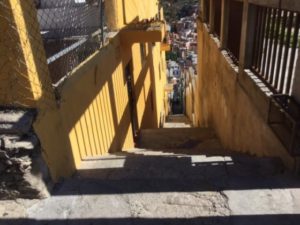
Guadalajara is also known for several large cultural festivals. The International Film Festival of Guadalajara is a yearly event which happens in March. It mostly focuses on Mexican and Latin American films; however films from all over the world are shown. The event is sponsored by the Universidad de Guadalajara, CONACULTA, the Instituto Mexicano de Cinematographía as well as the governments of the cities of Guadalajara and Zapopan. The 2009 festival had over 200 films shown in more than 16 theatres and open-air forums, such as the inflatable screens set up in places such as Chapultepec, La Rambla Cataluña and La Minerva. In that year, the event gave out awards totaling 500,000 USD. The event attracts names such as Mexican director Guillermo del Toro, Greek director Constantin Costa-Gavras, Spanish actor Antonio Banderas and U.S. actor Edward James Olmos.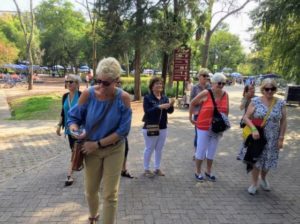
The Guadalajara International Book Fair is the largest Spanish language book fair in the world held each year over nine days at the Expo Guadalajara. Over 300 publishing firms from 35 different countries regularly attend, demonstrating the most recent productions in books, videos and new communications technologies. The event awards prizes such as the Premio FIL for literature, the Premio de Literatura Sor Juana Inés de la Cruz, also for literature, and the Reconocimento al Mérito Editorial for publishing houses. There is an extensive exposition of books and other materials in Spanish, Portuguese and English, covering academia, culture, the arts and more for sale. More than 350,000 people attend from Mexico and abroad. In 2009, Nobel prize winner Orhan Pamuk, German children’s author Cornelia Funke and Peruvian writer Mario Vargas Llosa participated along with about 500 other authors present. Activities include book presentations, academic talks, forums, and events for children.
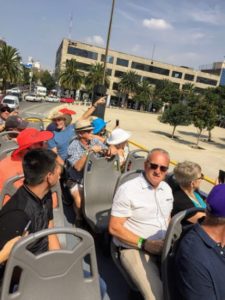
The Festival Cultural de Mayo (May Cultural Festival) began in 1988. In 2009, the event celebrated the 400th anniversary of relations between Mexico and Japan, with many performances and exhibitions relation to Japanese culture. The 2009 festival featured 358 artists in 118 activities. Each year a different country is “invited”. Past guests have been Germany (2008), Mexico (2007), Spain (2006) and Austria (2005). France is the 2013 guest.
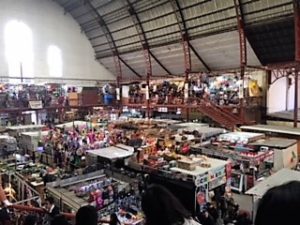
Despite the Guadalajara area historically being an ethnically Caxcan region, the Nahua peoples form the majority of Guadalajara’s indigenous population. There are several thousand indigenous language speakers in Guadalajara although the majority of the indigenous population is integrated within the general population and can speak Spanish.
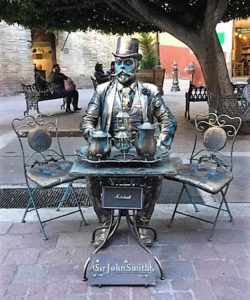
Architecture
The style of architecture prevalent in Europe during the founding of Guadalajara is paralleled in the city’s colonial buildings. The Metropolitan Cathedral and Teatro Degollado are the purest examples of neoclassical architecture. The historical center hosts religious and civil colonial buildings, which are noted for their architectural and historical significance and are a rich mix of styles which are rooted in indigenous cultural contributions (mainly from Ute origin), incorporated in the Mozarabic and castizo, and later in modern European influences (mainly French and Italian) and American (specifically, from the United States). The French-inspired “Lafayette” neighborhood has many fine examples of early 20th-century residences that were later converted into boutiques and restaurants.

Guadalajara’s historical center has an excellent assortment of museums, theaters, galleries, libraries, auditoriums and concert halls, particular mention may be made to Hospicio Cabañas (which dates from the 18th century), the Teatro Degollado (considered the oldest opera house in Mexico), the Teatro Galerías and the Teatro Diana. The Hospicio Cabañas, which is home to some of the paintings (murals and easel) by José Clemente Orozco, was declared a World Heritage Site by UNESCO in 1997. Among the many structures of beauty is the International Headquarters Temple of La Luz del Mundo in Colonia Hermosa Provincia, which is the largest in Latin America.
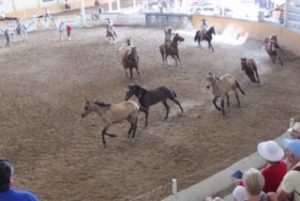
During the Porfiriato the French style invaded the city because of the passion of former president Porfirio Díaz in the trends of French style, also Italian architects were responsible for shaping the Gothic structures that were built in the city. The passage of time reflected different trends from the baroque to Churrigueresque, Gothic and neoclassical pure. Even the architectural lines typical of the decades of the 40’s, 50’s and 60’s the Art Deco and bold lines of postmodern architects of the time.
Some architectural styles found in the city are:
• Incipient Baroque
• Baroque
• Viceregal
• Neoclassical
• Modern
• Eclectic
• Art Deco
• Neo-Gothic
The modern architecture of Guadalajara has a numerous figure of different architectural production from the neo-regionalism to the primitiveness of the 60’s. Some of these architects are: Rafael Urzua, Luis Barragán, Ignacio Díaz Morales, Pedro Castellanos, Eric Coufal, Julio de la Peña, Eduardo Ibáñez Valencia and Félix Aceves Ortega.



